Smolensk is the western frontier of Russia, more than once or twice taking upon itself the first blows of invaders from Europe, constantly burrowing into the lands of the Russian state. This is an ancient city with a rich history, which is mentioned in chronicles of the 9th century. The famous route "from the Varangians to the Greeks" passed through it - an important trade artery connecting Scandinavia, the Baltic states, Rus' and Byzantium.
In Smolensk, the sights of the Early Middle Ages and architectural monuments of the New Age have been preserved. Of particular interest are military museums, where you can learn about the glorious military past of the city. The main tourist attraction is the powerful Smolensk Fortress - once an impregnable bastion that reliably protected the borders of the state.
What to see and where to go in Smolensk?
The most interesting and beautiful places for walking. Photos and a short description.
- Smolensk Kremlin
- Assumption Cathedral
- Deer sculpture
- Grateful Russia - to the Heroes of 1812
- Art Gallery
- Historical Museum
- Drama Theater named after A. S. Griboyedov
- Museum Smolensk - Shield of Russia
- Museum Smolensk Flax
- Museum of Sculpture S.T. Konenkov
- City Smithy
- Museum Smolensk region during the Second World War
- Memorial complex Katyn
- Peter and Paul and Varvara churches
- Church of Michael the Archangel
- Catholic church
- Railway station building
- Embankment of the Dnieper River
- Blonier garden
- Lopatinsky garden
Smolensk Kremlin
The fortress wall built in the 16th - early 17th centuries and was of great importance for the defense of the western borders of the Russian state. More than once, she stopped the advance of enemy armies. In 1812, during the attack of Napoleon's troops, most of the fortification was destroyed. 18 towers and about 3.5 km of wall fragments have survived to this day. Today the building is recognized as an architectural monument.
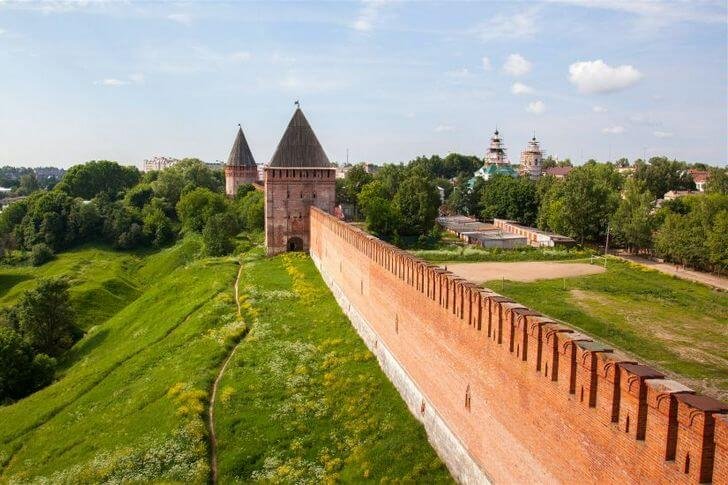
Assumption Cathedral
Smolensk Cathedral, located on Cathedral Hill. It was built at the beginning of the 17th century in memory of the defense of the city from the army of the Commonwealth on the site of an old church of the 12th century. During the wars of 1812 and 1914-1945, the building was not damaged. Napoleon even ordered to put up guards to guard the cathedral - he was so amazed by its beauty. The main shrine of the church is the relics of the patron saint of the city Mercury Smolensky.
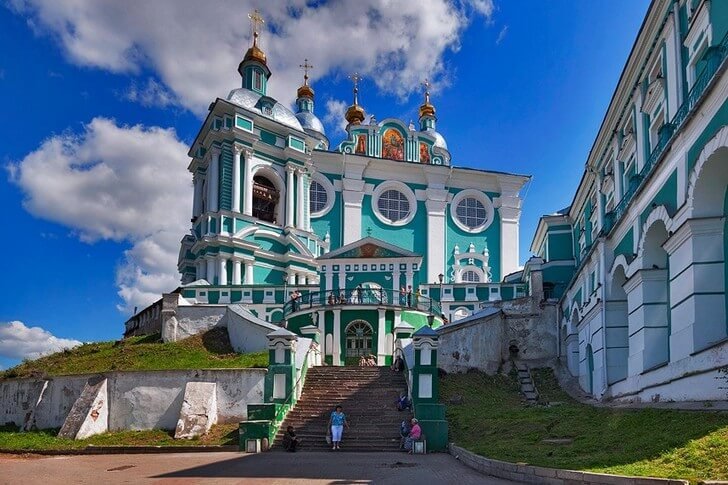
Deer sculpture
The statue was created by the sculptor R. Friese in 1910 by order of Kaiser Wilhelm II. Initially, the figure of the beast stood in front of the hunting estate of the ruler. In 1944, Soviet soldiers discovered her at the dacha of Hermann Goering. After 1945, the deer was transported to Smolensk and installed in the city garden. Over the past years, the bronze statue has been restored three times, as local vandals were not indifferent to it.

"Grateful Russia - to the Heroes of 1812"
One of the most famous monuments in Smolensk, erected in honor of the 100th anniversary of the Patriotic War of 1812. It is made in the form of a rock about 10 meters high, on top of which eagles protect their nest from a gall with a sword. This image symbolizes the impregnability of Russia. The sculpture stands in the Square of Memory of Heroes at the very walls of the fortress wall. Nicholas II attended the opening of this park in 1912.
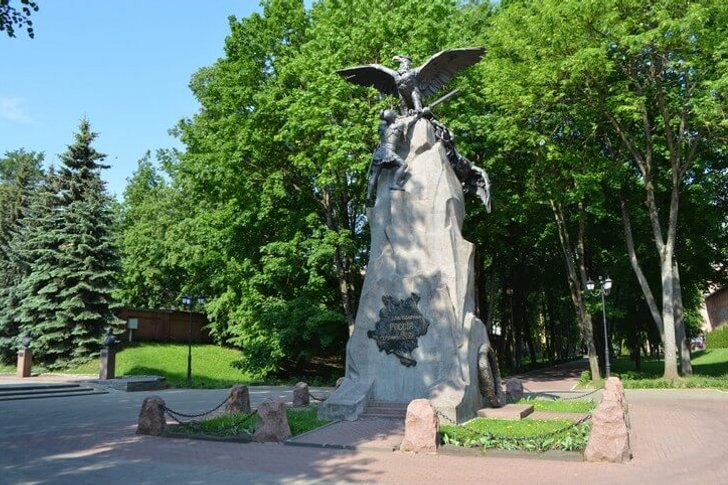
Art Gallery
Since 2010, the gallery has been housed in the building of the Alexander Real School, an architectural monument of the 19th century. The museum presents collections of Russian and Western European art: paintings by Repin, Aivazovsky, Levitan, Benois, Falk, Roerich and other masters, as well as sculptures. The gallery constantly hosts temporary exhibitions of contemporary artists.
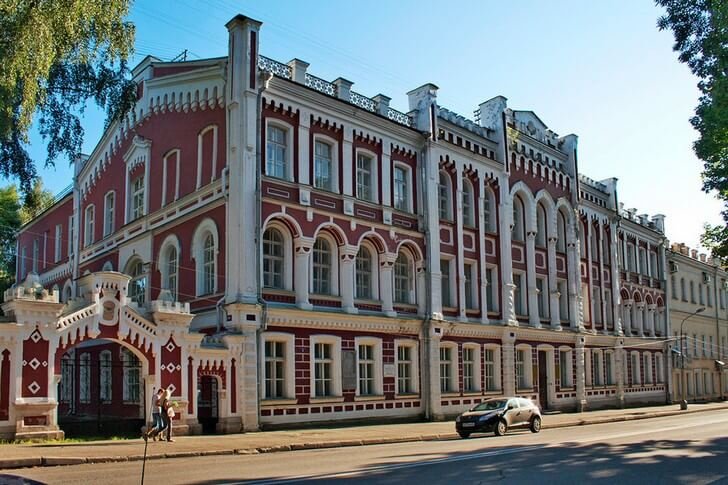
Historical Museum
The exposition is part of the structure of the Smolensk Museum-Reserve and is its oldest part. Here are collections that tell about the history of the Smolensk region from the Stone Age to the New Age. Thematic exhibitions are placed in several halls, where the exhibits are arranged in chronological order. Here you can see ancient tools, medieval armor, weapons, coins, jewelry, household items and much more.
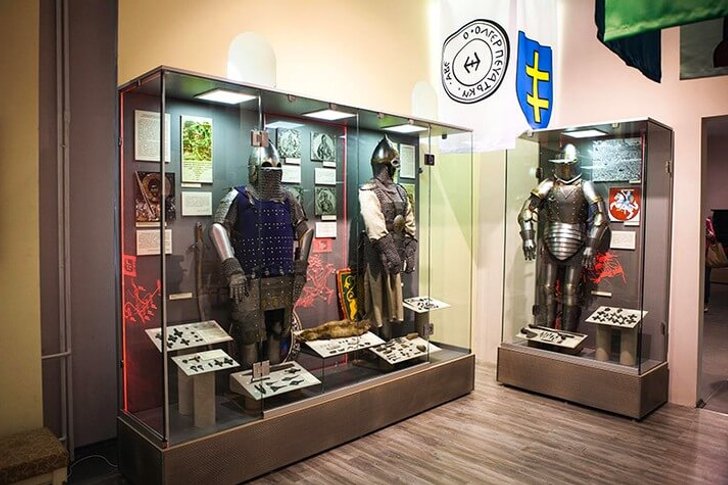
Drama Theater named after A. S. Griboyedov
The stage was founded in 1780, which makes it one of the first in Russia. Its history began with the arrival of Empress Catherine II, accompanied by Emperor Joseph II. The modern building in the monumental Stalinist Empire style was built in 1939. Performances are held in two halls - large and small, designed for 885 and 60 people, respectively. The theater is distinguished by its modern repertoire and the presence of performances for children.

Museum "Smolensk - Shield of Russia"
The museum is located in the Thunder Tower of the Smolensk fortress wall. The main part of the exposition, opened in 1977, is devoted to the military history of the city; since 2002, a collection has been added here that tells about the construction of defensive structures. On the third tier of the tower there is a thematic exhibition "Soldier of 1812", consisting of equipment and weapons of the Russian and French armies.
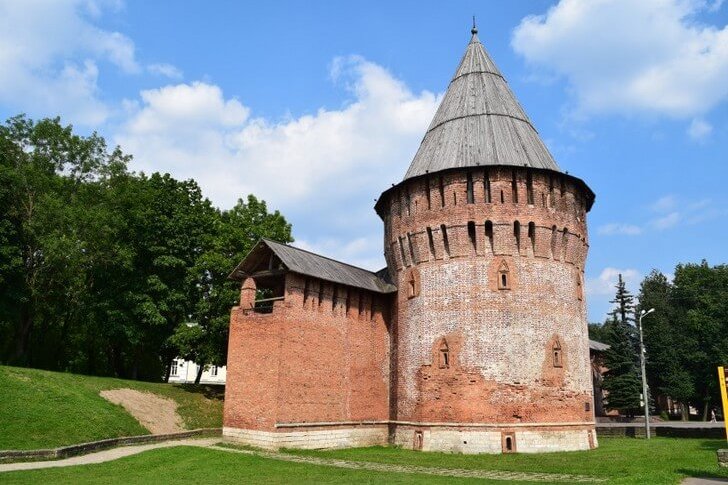
Museum "Smolensk Flax"
Since ancient times, the Smolensk region has been engaged in the cultivation and processing of flax. In the museum dedicated to this craft, visitors will learn about the traditions of processing linen fabrics, see costumes, homemade spinning wheels, and tools with which the peasants cultivated this crop. A separate part of the exposition is given over to household items that were traditionally present in a Russian hut.

Museum of Sculpture S.T. Konenkov
The sculptor S. T. Konenkov is a native of the Smolensk region. The museum was created on the initiative of the master, who wished to transfer most of his works to his native city. The collection was placed on the territory of a picturesque 19th-century mansion in the city center. The exposition consists of 80 works on religious, revolutionary and everyday themes, created by the sculptor in different periods of his work.
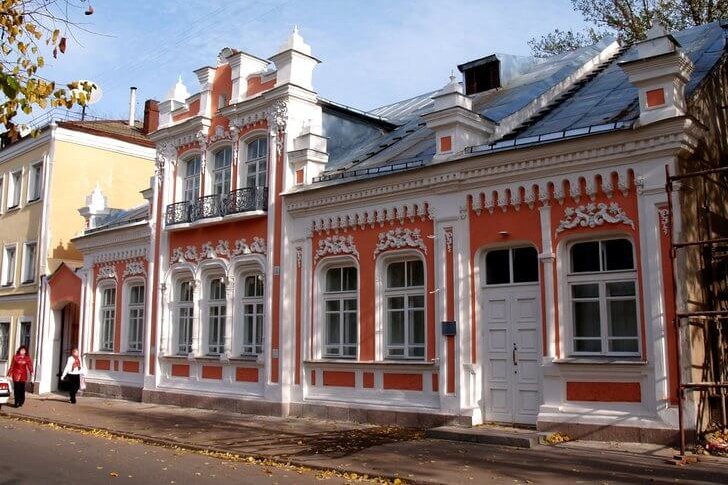
City Smithy
Museum located in a small city house of the 17th century. The exposition opened in 1982. It is entirely dedicated to blacksmithing. Here, visitors will see not only tools, but also skillful products of craftsmen of the 17th-19th centuries: dishes, candlesticks, keys, weapons, and interior items. Some of the exhibits are real masterpieces. The tour is led by an employee in a traditional blacksmith costume.
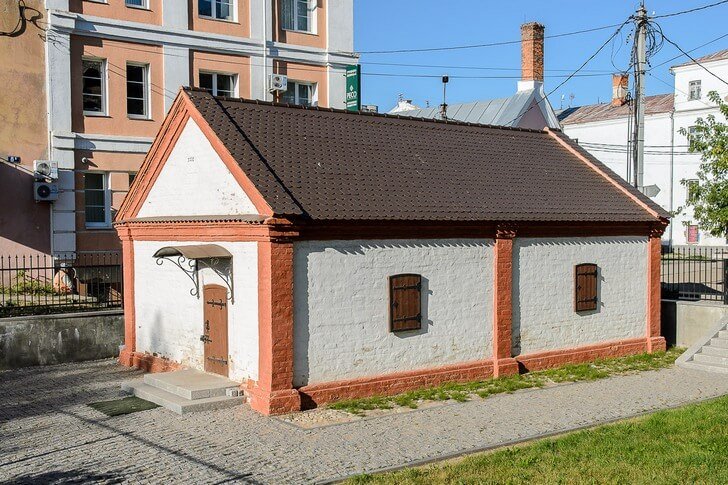
Museum "Smolensk region during the Second World War"
The collection occupies the building that previously housed the City Folk School in memory of 1812, erected 100 years after the events of World War II. The building was built in the neo-Russian style according to the project of N. Zaputryaev. The exposition consists of archival documents and photographs telling about the history of the occupation, the partisan movement and the liberation of the Smolensk region from the invaders.
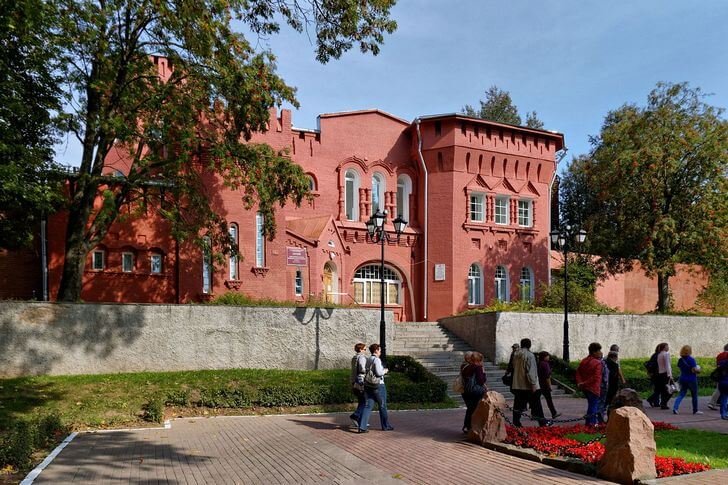
Memorial complex "Katyn"
International memorial dedicated to the victims of political repression. It was erected in 2000 on the territory of a military cemetery, where more than 4,000 Polish officers were buried, who were shot in 1940 by authorized NKVD. In total, the remains of more than 6 thousand victims of Stalinist repressions, as well as the bodies of 500 Soviet soldiers who died in 1943 from German bullets, lie in the Katyn Forest.

Peter and Paul and Varvara churches
The churches of the Holy Great Martyr Barbara and Peter and Paul are not far from each other. The first one was built in the middle of the 18th century at the expense of local merchants, the second one is a unique architectural monument of the pre-Mongol era. The Varvara temple was almost not damaged during the war of 1812, but during the Second World War it was partially destroyed. The Peter and Paul Church was restored twice: after the invasion of Napoleon and after the end of the Second World War.
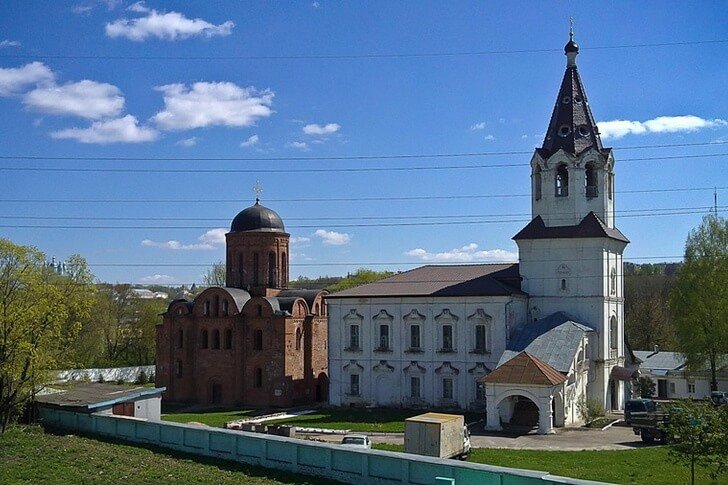
Church of Michael the Archangel
The building was erected in the XII century by order of Davyd Rostislavich. According to the chronicle, it was part of the complex of buildings of the princely court. In the 18th and 19th centuries, a warm chapel, a stone bell tower and a school for homeless children were added to the temple. After the restoration of the 1990s, the church acquired its original appearance of the pre-Mongolian era. Today the building is an important architectural monument.

Catholic church
The temple was erected at the end of the 19th century in the Gothic style, typical for medieval Western Europe. Its history is connected with the Polish-Lithuanian gentry, which Alexei Mikhailovich proposed to accept Russian citizenship with the preservation of all privileges. As a result, a Catholic community was formed in Smolensk. In the 18th century, there was a small church on the site of the temple, but it was destroyed in 1812.

Railway station building
The station is located on the Moscow railway line, trains depart from here to near and far abroad. The first station building was erected at the end of the 19th century, but in 1944 it was destroyed by bombing. The modern building appeared in the 1950s. Today it can be considered one of the city's attractions. For many tourists from nearby countries, the station building is the face of the city and all of Russia.
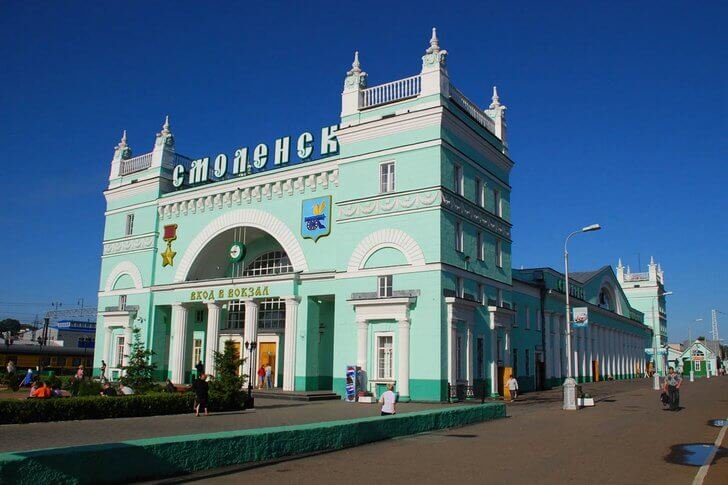
Embankment of the Dnieper River
The embankment was equipped for the 1150th anniversary of the city in 2013. Despite the fact that the city budget allocated more than 600 million rubles for the work, it looks rather modest. The promenade consists of three levels connected to each other by means of passages. Trees have been planted along the embankment, flower beds have been laid out, benches and lanterns have been placed, and playgrounds have been organized for children.

Blonier garden
One of the recreation parks in Smolensk, founded in 1830. Previously, there was a square in its place. Today it is one of the most pleasant and picturesque places in the city. There is a sculpture of a Deer and a monument to the composer M. I. Glinka. Sometimes the garden is even named after the maestro. Another local attraction is a small light and music fountain.
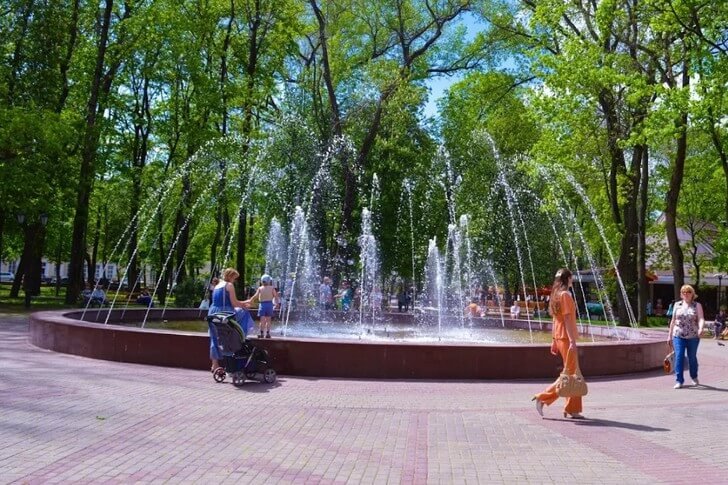
Lopatinsky garden
The central city park, laid out by order of the governor A. G. Lopatin in 1874. Today its area is 10 hectares. The place where the garden is located has a rich and mysterious history - earlier there was the Royal Bastion built by the Poles, which was used as a prison for a long time. In the 19th century, it was replaced by a restaurant and a summer theater, later a park appeared.
